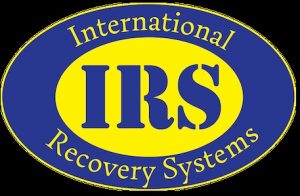 Guest Editorial
Guest Editorial
225, 431, 77
What do these numbers mean? Well to answer simply these are the three numbers that I base every decision my company makes on. These three numbers tell me about my company’s health, who my good clients are and which are due for a pink slip. My goal today is to share my company’s numbers, what they mean and how I use them to grow my business, and get others to continue the conversation.
The last time I wrote I presented an insight into the past and present of my company. I explained how much the industry has changed for us in a little less than 10 years and I heard some positive feedback from folks who have come to similar conclusions and were happy that someone presented it to the masses. I am most thrilled that if I fail at anything else at least the conversation has started.
When I spoke to individuals one on one after that article I began to notice a reoccurring question emerge, “how do you get your numbers, and which ones do you find most important?” Honestly, I didn’t have to think long about how to answer either question, it’s the same three numbers I look at weekly, monthly and every time I bring on a new client or let another one go (by the way if you not periodically letting poor performing clients go you are doing your company a major disservice, but that is a topic in and of itself).
So what are the three numbers I am speaking of? They are as follows, Total Revenue per Assignment, Total Revenue per Recovery, and most importantly Cost per Assignment. These numbers are really easy to obtain and even easier to track once you have them.
225.00
First, Total Revenue per Assignment is pretty straight forward. Take the total revenue your company generates for the month, (and I mean total revenue…if you bill it, earn it, or take cash it should be in this tally) then divide by total amount of assignments accepted during the same period. That equals total Revenue per assignment. For my company that number is 225.00.
431.00
The next number is also fairly simple as the same method used with assignments only this time replacing the assignment number with total recoveries. This should include Invols, Vols, Impounds and any other recoveries completed during that time frame. Our number is 431.00
77.00
The last number is a little more detailed and requires a little more explanation, but is the most important of the three. This, when calculated correctly will arm the business owner/manager with its greatest negotiation and operating tool. This is Cost per Assignment.
To obtain this number I only recommend using costs directly related to the running of the assignment not overhead or what is referred to as fixed costs. For this exercise we only want to rely on “variable costs”. These are costs that fluctuate as volume of assignments increase or decrease. This includes commissioned field staff earnings, fuel costs, skip tracing costs, just to name a few. Do not make the mistake of including truck payments or wear and tear or depreciation because these numbers generally do not change whether you have a hundred assignments or a thousand.
Now once you have that total you divide by total assignments and that is your cost per assignment. Ours is 77.00.
Once these numbers are formulated you know instantly every assignment you accept you know you should earn X and it will cost you Y. These numbers will allow you to measure individual clients beyond just 350 you may charge for the repo and assume they are profitable to do business with. You may be surprised and learn that a client originally thought of as an asset may in fact be a liability.
I encourage everyone who is not currently doing this exercise to give it a try and see where your numbers are. Once you get your company averages apply the same concepts for your top five clients and see how they stack up. I bet you will be surprised at what you find.
If you have any questions or would like more detail don’t hesitate to reach out I would love to know what you guys think about this.
Jeremy Cross












Facebook Comments